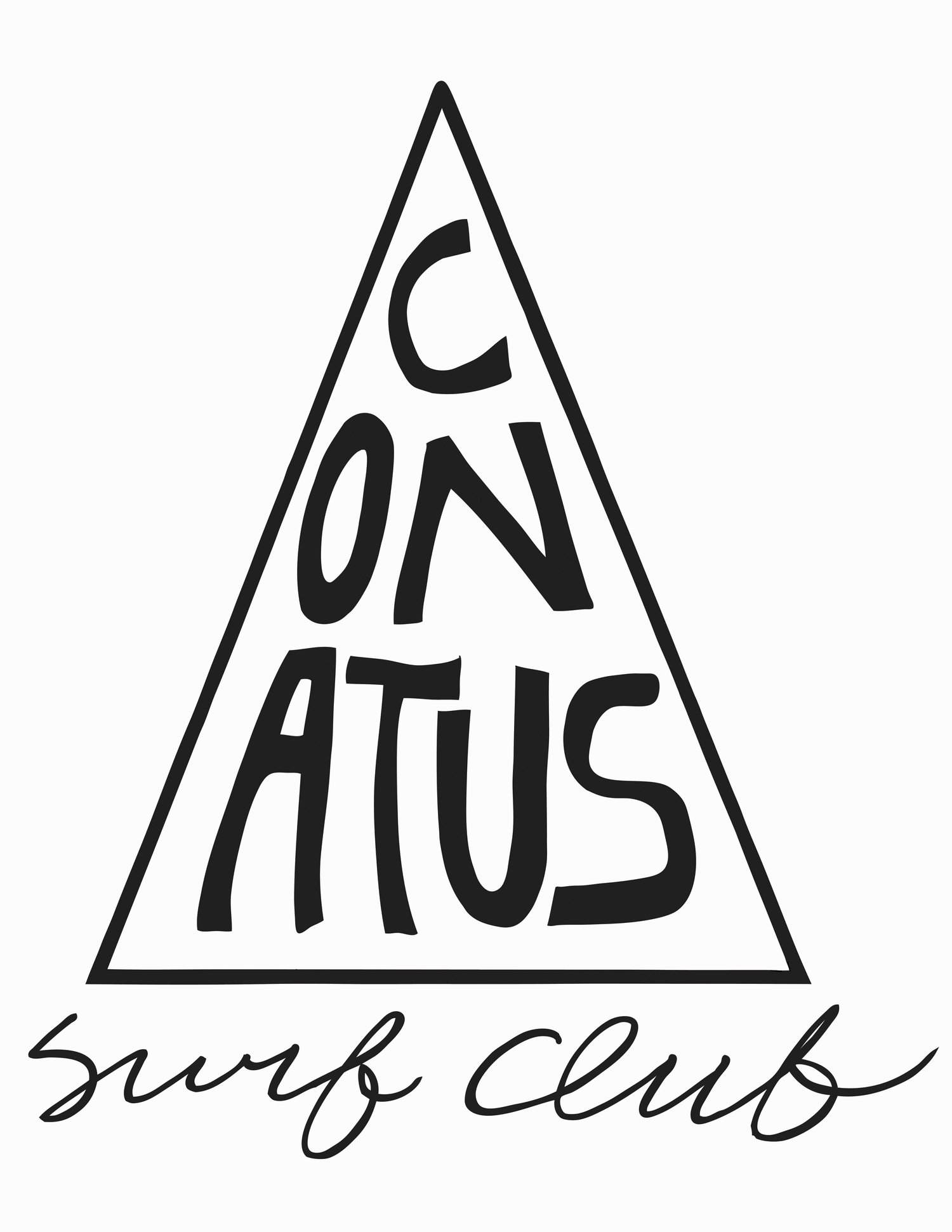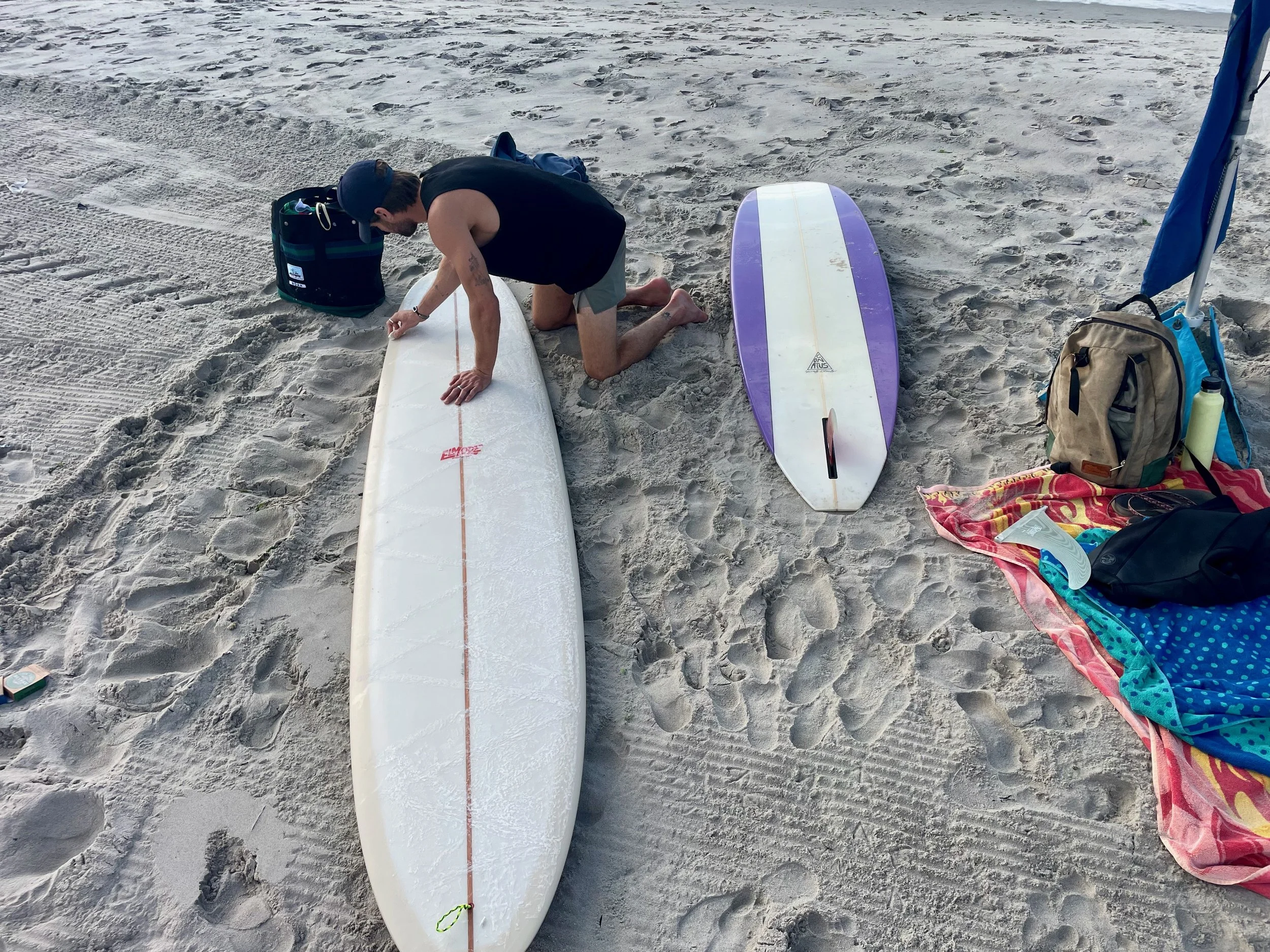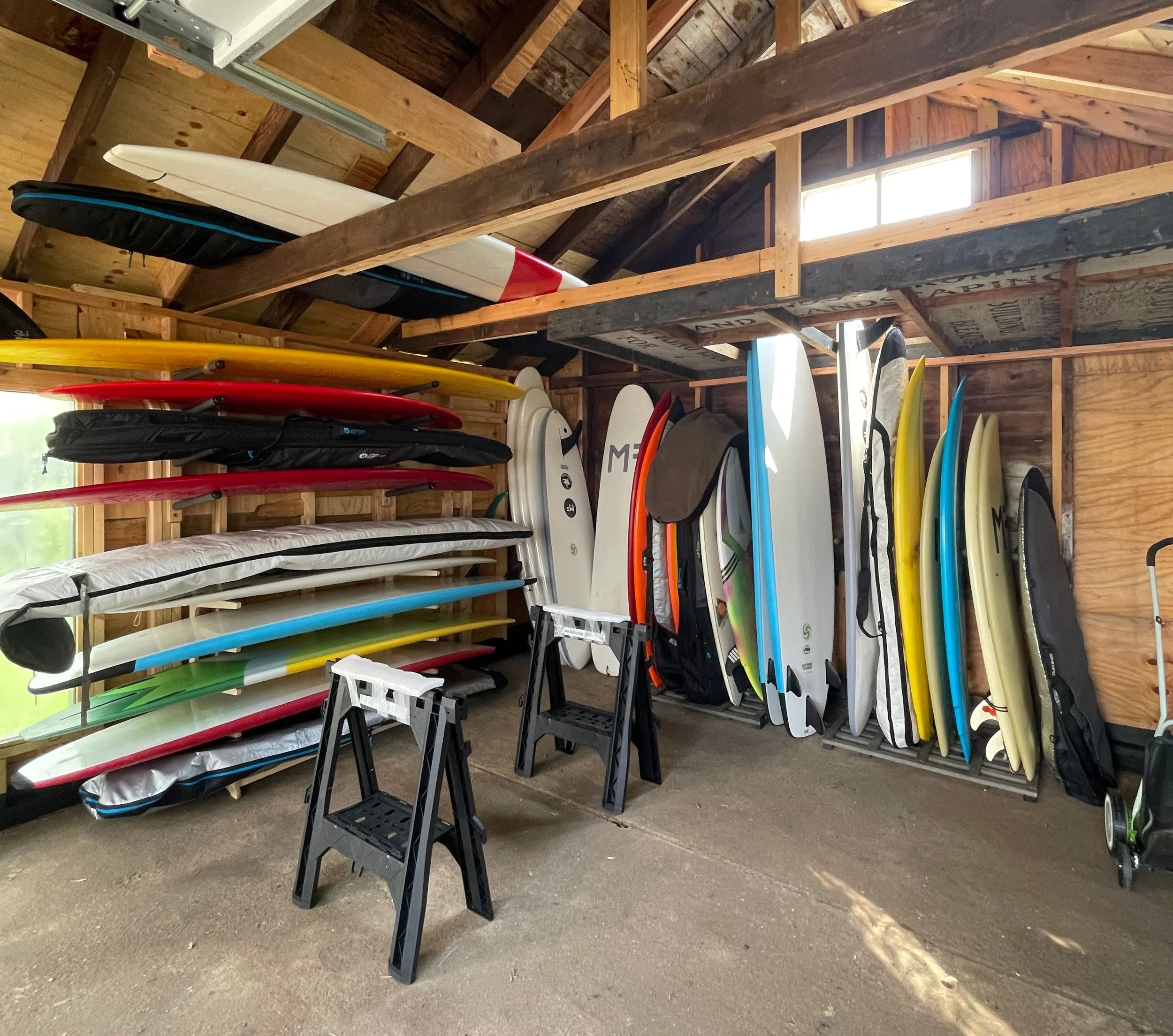Learn how to properly wax your surfboard with the right basecoat foundation and circular technique. This complete guide covers temperature selection, foam board differences, common mistakes that ruin traction, and maintenance tips. Essential gear setup for reliable grip and safety in the lineup.
Read MoreWhy Do You Wax a Surfboard? The Complete Guide to Surf Wax
CSC+SR365 athlete, Ben, waxes his new Elmore log at the beach. Ben uses a cross hatch and big circle hybrid approach.
Here's a concise excerpt for sharing:
Why Do You Wax a Surfboard? The Complete Guide
The simple truth: you'll slide right off if you don't wax your surfboard. But proper waxing is more than just staying on—it's a rite of initiation into surfing culture. Getting it wrong signals to everyone in the lineup that you don't know what you're doing. From temperature-specific wax selection to avoiding "republican wax jobs," learn the cultural and practical realities of why surfers wax their boards and how to do it right.
Read MoreThe Real Reason You're Not Catching Waves (It's Not Your Pop-Up)
Some common failures to read the wave correctly.
After coaching hundreds of frustrated surfers, I can tell you definitively: if you're not catching waves consistently, focusing on your pop-up alone won't fix it. The real problem is that no one taught you how to actually read waves. Most surfers spend months obsessing over pop-up technique while completely ignoring the fundamental timing and positioning that determines whether you'll catch a wave at all.
Read MoreBuying Your First Surfboard: A comprehensive guide
Inside the CSC garage: all the options!
After coaching hundreds of beginners, I've identified the exact specifications and decision frameworks that separate boards accelerating your learning from those that hold you back—including the optimal 8'6" x 23" x 3" dimensions and why soft vs. hard construction matters less than proper sizing.
Read MoreFront Footed vs Back Footed Surfing: What Every Surfer Needs to Know About Stance and Weight Distribution
Ever watch a surf contest and hear commentators talk about "front footed" vs "back footed" surfers and wonder what they're talking about? Or maybe you've always considered yourself one or the other. What, exactly, does it mean to be a front footed or back footed surfer? How do you know which you are? Is one better than the other? Is there an alternative or an ideal stance for most surfers? Let's clear this up for good!
Think YOUR stance needs work?
GET A STANCE BREAKDOWN →Why Every Surfer is Both Front Footed and Back Footed by Nature
We all surf on two feet, so essentially everyone is by nature both a front footed and back footed surfer. The real question isn't which foot you use, but when and how you use each one effectively.
All Proper Surfing Starts with Your Back Foot
All adequate and mechanically sound surfing is initiated with the back foot. This goes for shortboarding as well as midlength and longboard surfing. Surfboards are designed to pivot around the tail, so if you can't set up a turn or a line with your back foot, then you need to learn that first. In this way every competent surfer is at least partially "back footed".
The Neutral Stance: The Sweet Spot for Most Surfers
There is a third option and that's a "neutral stance". This stance equally distributes weight through each foot. Sometimes the back foot is weighted a little harder, and sometimes the back foot is unweighted in order to achieve a different line or to create speed. In the video I argue that, for most people, the stance you ought to strive after is the neutral stance.
When Front Footed vs Back Footed Labels Actually Matter
The true distinction between front and back footed surfing only matters at an expert or elite level. "Front footed" surfers transfer weight from their back to their front foot for faster pumping and for radical blow tail and aerial maneuvers. They do this so often that it's the sheer frequency at which they place pressure on their front foot that earns them the label.
Dane Reynolds, the quintessential front footed progressive surfer transfers weight onto his front foot to de-weight the tail for an epic fin throwing maneuver.
"Back footed" surfers are less inclined to transfer weight onto the front foot for pumping and for recovery through gnarly carving maneuvers. They are said to have a "lead foot" and are also called "power surfers". I don't think I can be more clear than I am in the video portion where I examine the classic back footed surfing of Sunny Garcia.
Sunny Garcia, quintessential back footed surfer, pushes his back through his turns with extra power and extra spray.
Why Beginners and Intermediates Should Focus on Back Foot Fundamentals
If you're an advancing beginner or intermediate and you're leaning too much on your front foot for speed, thinking that will make the board go faster, that does not make you a front footed surfer. That means that your form is wrong and you need to learn how to initiate turns with your back foot.
Sure, you may end up a front footed surfer at the end of the day, but you're better off learning first to achieve a neutral stance. I think the examples in the video make it clear enough that, technically speaking, a truly front footed surfer is someone who can easily do an air 360, not a beginner who is incorrectly pressing down on their front foot. This actually causes the board to go slower, not faster, because you've not pushed sufficient air and water out the back with your back foot first.
Ready to improve your surfing stance?
ANALYZE MY SURFING HERE →Proper Foot Placement for All Surfboard Types
In terms of foot placement in general, the back foot must reach back over the fins to initiate turns. The front foot is usually in the center of the board, perpendicular to the stringer, with toes slightly pointed forward. This is the case on almost every kind of surfboard known to man. We make one exception for finless boards and boards called "hulls". I suppose I can cover those in another post. Suffice it to say here that this principle doesn't apply to them.
How to Improve Your Foot Placement Without Looking Down
It's good practice not to look down at your feet to determine where you're placing them. For this you want to go by feel and by video review feedback. You fix improper foot placement in two main ways: One, by refining your pop up at home and in the water. Two, by practicing moving your back foot forward off the tail block and back over the tail block both at home and in the water.
My Personal Surfing Stance and Why It Matters
What about me? I'm a neutral stance surfer who has a tendency towards my back foot. I can sometimes de-weight the back foot to get my fins out of the back of the wave, but it takes extreme conscious effort on my part. Putting any pressure on my right foot (that's my front foot) feels extremely unnatural and weird to me. That's why I look like such a kook when I'm trying to surf frontside in a regular foot stance! When doing that, I inevitably lean forward over my left foot because that is what feels most comfortable. Ok, I hope this is clear to you now! It might be a good challenge and good fun to watch surf videos and pro contests and try to determine which surfers are front footed, back footed, or neutral stanced!
Want to master your stance in just one week?
JOIN THE NY INTENSIVE →Dropknee Surfing
Surfing is a very fluid and balanced sport but it is not symmetrical. We all have a stance preference -- either goofy or regular -- and therefore we all surf with only one of our feet forward. This is our front or guiding foot and it helps us go where we want to go but the truth of the matter is that your back foot is your workhorse and is what keeps you stable and directs your energy on the wave. A common error of beginning and intermediate (and some advanced) surfers is to lean too far forward/hard on the front foot (I myself am guilty at times and have worked hard to balance this out). It's natural to want to do this -- surfing is exciting and you want to get to the end of that wave or race towards that next section -- but like most things surf, the better thing to do is not that which is most intuitive (another example is taking off in the most critical part of the wave). I want to stress that it is not altogether bad to be a front footed surfer, but that all self professed "front footed surfers" still know how to drop their back knee and put weight on their back edge (I say edge, because this is true for both finless and finned surf craft) when crouching to get barreled or when sinking into a delicious (frontside or backside) roundhouse cutback. Dropping the back knee allows you to square your shoulders to the wave and opens up your range of movement and vision. And most of all it hides your rear end from the rest of our eyes! When the back knee bows out or when you bend forward at your waist you are exhibiting "poo stance", which beyond being aesthetically unpleasing is highly nonfunctional for everything except hanging on (which is also why it's knowns as "danger stance" or "cockroach stance"). Below I've posted more images sourced from the web of men and women who demonstrate perfect low back knee technique. As I always say at the end of every coaching session or lesson, it's really important to look at examples of great surfers and to try to visualize yourself applying their techniques.
Perennial style master Rob Machado demonstrates a correct back knee drop while riding an alaia.
Carissa Moore is famous for her low back knee -- it's what gives her turns so much power and spray.
Joel Parkinson is another master of the low back knee. You can see here in this backside tube that his knee is practically on his surfboard. You can see how this allows him to easily grab his rail to stabilize himself and look towards the exit of the tube.














